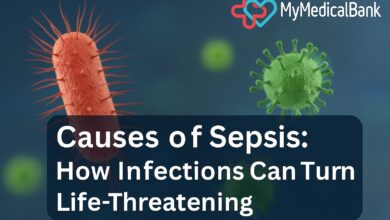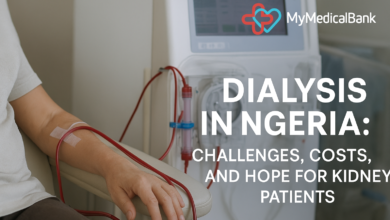Possible Cure for Cancer Patient: What you probably don’t know about Cancer

You might be wondering if there is actually a cure for cancer. Let me start by telling you a little about cancer. Cancer is a group of diseases that can cause almost any sign or symptom. The signs and symptoms will depend on where the cancer is, how big it is, and how much it affects the organs or tissues. As you read on you will discover the possible cure for cancer.
Every stage of cancer comes with its symptoms and changes. Cancer is a leading cause of death worldwide, accounting for 8.8 million deaths in 2015. The most common cancers are cancers of:
- Lung (1.69 million deaths)
- Liver (788, 000 deaths)
- Colorectal (774, 000 deaths)
- Stomach (754, 000 deaths)
- Breast (571, 000 deaths)
Check out our cancer risk calculator
According to research, there are more than 100 types of cancer, including breast cancer, skin cancer, lung cancer, colon cancer, prostate cancer and lymphoma. Symptoms vary depending on the type. Many genetic changes are required before cancer develops. Approximately 5–10% of cancers are due to inherited genetic defects from a person’s parents. Tobacco use is the cause of about 22% of cancer deaths. Another 10% are due to obesity, poor diet, lack of physical activity or excessive drinking of alcohol.
Cancer can be detected by certain signs and symptoms or screening tests. It is then typically further investigated by medical imaging and confirmed by biopsy. Cancer treatment may include chemotherapy, radiotherapy, and surgery.
What is cancer?
Cancer is also known as malignancy. What all types of cancer have in common is that cancer cells are abnormal and multiply out of control. However, there are often great differences between different types of cancer. Some grow and spread more quickly than others and some are easier to treat than others, particularly if diagnosed at an early stage. Cancer is often best handled at an early stage.
Signs and symptoms
Having one sign or symptom may not be enough to figure out what’s causing cancer. For example, a rash in a child could be a sign of a number of things, such as poison ivy, measles, a skin infection or a food allergy. However, if the child has the rash along with other signs and symptoms like a high fever, chills, achiness and a sore throat, then a doctor can get a better picture of the illness. Sometimes, a patient’s signs and symptoms still don’t give the doctor enough clues to be sure what’s causing the illness. Then medical tests, such as x-rays, blood tests, or a biopsy may be needed. Though as you read on you will discover the possible cure for the cancer patient, keep reading.
As a cancer cell begins to grow, it pushes on nearby blood vessels and nerves. This pressure causes some of the signs and symptoms of cancer. If cancer develops in a critical area of the body such as the brain, even the smallest tumor (growth) can cause symptoms. But sometimes cancer starts in places where it won’t cause any signs or symptoms until it has grown quite large. If cancer has spread (metastasized), signs or symptoms may appear in different parts of the body.
Check out our cancer risk calculator
Specific Symptoms of Cancer
Weight loss
Most cancer patients will lose weight at some point. Losing weight is often the first sign of cancer but most people will not take note because losing weight can be caused by other factors like a change of diet or exercise. This happens most often with cancers of the pancreas, stomach, oesophagus, or lungs.
Fever
Fever is very common among cancer patients. It becomes more obvious after the cancer cell has spread from where it started. Almost all people with cancer will have the fever at some time, especially if cancer or its treatment breaks down the immune system (this makes it harder for the body to fight infections). In a few instances, constant fever may be an early sign of blood cancers like leukemia or lymphoma.
Fatigue
Fatigue is a weakness (extreme tiredness) that doesn’t get better with rest. It may be an important symptom as linked to the growth of cancer. Fatigue may happen early in some cancers like leukemia. Some colon or stomach cancers can cause blood loss that’s not obvious. This loss of blood is another way cancers can cause fatigue because it leads to the loss of inner strength.
Pain
Pain may be an early symptom with some cancers like bone cancers or testicular cancer. A headache that does not go away or get better with normal treatment may be a symptom of a brain tumour. Back pain can be a symptom of cancer of the colon, rectum, or ovaries. Most often, pain due to cancer means it has already spread (metastasized) from where it started.
Skin changes
Skin cancers cause skin changes and reactions that can be seen. These signs and symptoms include:
- Darker looking skin (hyperpigmentation)
- Yellowish skin and eyes (jaundice)
- Reddened skin (erythema)
- Itching (pruritis)
- Excessive hair growth
Change in bowel habits or bladder function
Diabetic patients are advised to be very careful and take proper precautionary measures at this stage. Long-term constipation, diarrhea, or a change in stool size may be a sign of colon cancer. Pain when passing urine, blood in the urine, or a change in bladder function (such as needing to pass urine more or less often than usual) could be related to bladder or prostate cancer. It is imperative that one reports any changes in bladder or bowel function to a doctor.
Sores that do not heal
Skin cancers may bleed and look like sores that don’t heal. A long-lasting sore in the mouth could be oral cancer. This should be dealt with right away, especially in people who smoke, chew tobacco or drink alcohol regularly. Sores on the penis or vagina may either be signs of infection or early cancer and should be attended to by a health professional.
White patches inside the mouth or white spots on the tongue
White patches inside the mouth and white spots on the tongue may be leukoplakia. Leukoplakia is a pre-cancerous area that’s caused by frequent irritation. It’s often caused by smoking or other tobacco use. People who smoke pipes or use oral or spit tobacco are at high risk for leukoplakia. If it’s not treated, leukoplakia can become mouth cancer. Any long-lasting mouth changes should be checked by a doctor or dentist right away.
Unusual bleeding or discharge
Unusual bleeding can happen in early or advanced cancer. Coughing up blood may be a sign of lung cancer. Blood in the stool (which can look like very dark or black stool) could be a sign of colon or rectal cancer. Cancer of the cervix or the endometrium (lining of the uterus) can cause abnormal vaginal bleeding. Blood in the urine may be a sign of bladder or kidney cancer. A bloody discharge from the nipple may be a sign of breast cancer.
Thickening or lump in the breast or other parts of the body
Many cancers can be felt through the skin. These cancers occur mostly in the breast, testicle, lymph nodes (glands), and the soft tissues of the body. A lump or thickening may be an early or late sign of cancer and should be reported to a doctor, especially if you’ve just found it or notice it has grown in size. Keep in mind that some breast cancers show up as red or thickened skin rather than a lump.
Indigestion or trouble swallowing
Indigestion or swallowing problems that don’t go away may be signs of cancer of the oesophagus (the swallowing tube that goes to the stomach), stomach, or pharynx (throat). But like most symptoms on this list, they are most often caused by something other than cancer.
Watch interesting short clips from our YouTube channel
Key facts from WHO
- Cancer is the second leading cause of death globally and was responsible for 8.8 million deaths in 2015. Globally, nearly 1 in 6 deaths is due to cancer
- Approximately 70% of deaths from cancer occur in low- and middle-income countries
- Around one-third of deaths from cancer are due to the 5 leading behavioral and dietary risks: high body mass index, low fruit and vegetable intake, lack of physical activity, tobacco use, and alcohol use
- Tobacco use is the most important risk factor for cancer and is responsible for approximately 22% of cancer deaths
- Cancer-causing infections, such as hepatitis and human papillomavirus (HPV), are responsible for up to 25% of cancer cases in low- and middle-income countries
- Late-stage presentation and inaccessible diagnosis and treatment are common. In 2017, only 26% of low-income countries reported having pathology services generally available in the public sector. More than 90% of high-income countries reported treatment services are available compared to less than 30% of low-income countries
- The economic impact of cancer is significant and is increasing. The total annual economic cost of cancer in 2010 was estimated at approximately US$ 1.16 trillion
- Only 1 in 5 low- and middle-income countries have the necessary data to drive cancer policy
The movement to save 2,000 men from prostate cancer
Possible Cure for Cancer Patient
There has not been a medical cure for cancer. The only practical and workable cure for cancer is the change of lifestyle and cure through nature. Over time, some people who have been diagnosed with cancer have been cured through natural means and a change of lifestyle.
Curing cancer through nature can sometimes entail undergoing a 6 to a 12-month therapy session to be cured depending on the growth level of cancer. When one is working to cure cancer by natural means, it is advisable to avoid boosting the immune system. When the immune system is boosted, cells in the body are activated. While this is occurring, cancer cells might start to grow stronger. Starving yourself can sometimes lead to cancer cells dying. This is why intermittent fasting is sometimes recommended for cancer, a necessity for cancer patients.
Do you wish to check out our health risk calculators such as cancer risk calculator, diabetes risk calculator, and many more click here… or to be part of our MMB community click here…
Follow us on all our social media platforms for more update
Instagram: @mymedicalbank
Twitter: @mymedicalbank
Facebook: Mymedicalbank
YouTube: Mymedicalbank
Related posts
A Date with History: MyMedicalBank Health Symposium 2018
10 Health and Nutrition Tips That Are Actually Evidence-Based



